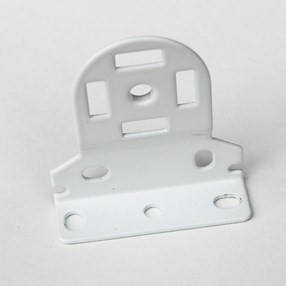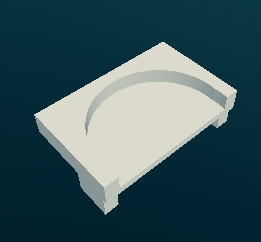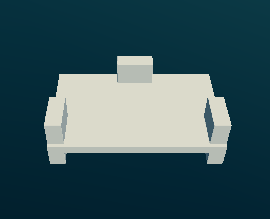Haskell in the Real World
I had a delightful experience this morning, where I fixed a real world problem in my life with Haskell. It’s rare that I actually get to use this stuff I spend so much time thinking about, so thought it would make a nice and quick blog post.
The Problem
My apartment used to have some crappy roll-down blinds, which did absolutely nothing for blocking out early morning light. As the master of my domain, I took them down and installed more traditional curtains in their place, held up by a tension rod. My tension rod is tensioned between the mounting plates for the old blinds, which are metal. Unfortunately, the rubber pads of the tension rod don’t get much of a purchase on the metal, and so my curtains fall down once a week or so.
They fell down yesterday, and I resolved that would be the last time.
The Solution
I’ve recently bought a 3D printer, and like most new technology, it has taken some time to acclimatize to. Having a mini-factory in your house is probably pretty powerful, but so far I’ve just been looking for excuses to use it. There are lots of weird projects on Thingiverse that I keep trying to convince myself I need in my apartment.
But today was a turning point. The slippery mounting plate has some holes in it — so I realized I could manufacture a bracket that would sit in the mounting plate and prevent my tension rod from falling again.

Armed with my digital calipers, I took some measurements of the plate, and quickly whipped up a CAD model using the implicit library — a library for doing CAD modeling in Haskell:
import Graphics.Implicit
main :: IO ()
main = writeSTL 0.25 "/tmp/mount.stl" $
let base = center3 $ union
[ slamBack $ slamTop $ centeredBox 40 40 6
, slamBack $ slamBottom $ centeredBox 9 3.7 6
]
in difference
[ slamFront $ difference
[ slamBottom $ union
[ mirror (1, 1, 0) base
, mirror (-1, 1, 0) base
, base
]
, translate (mk3 0 0 (-6))
$ slamBottom
$ cylinder (33 / 2) 10
, translate (mk3 0 (-3) (-6))
$ slamBottom
$ cylinder (33 / 2) 10
]
, slamFront $ slamBottom $ centeredBox 40 14.5 6
]This program isn’t going to win any awards and the magic numbers are petrifying. But it’s OK, because it saves to /tmp anyway. The result is a little bracket that sits inside of the holes of the mounting plate and prevents the tension bar from moving.
The tension of the rod pushes the pins into the holes, which prevent the bracket from falling, which in turn holds up the tension rod. Amazing, really.


An hour of printing later, and my new brackets were done. They fit into the holes just fine, and I can rest soundly knowing that the darkness of my room is forever safeguarded.